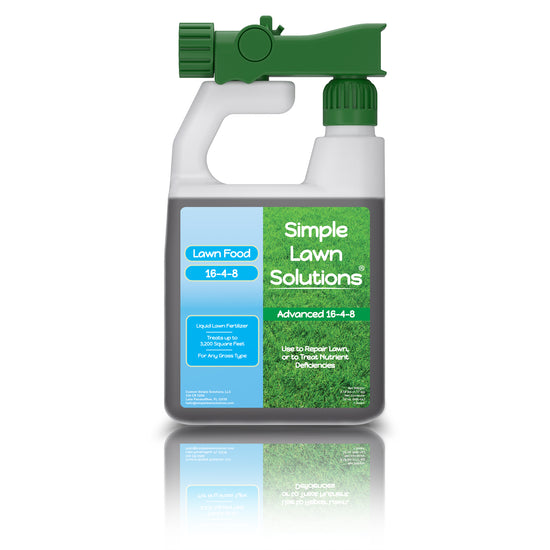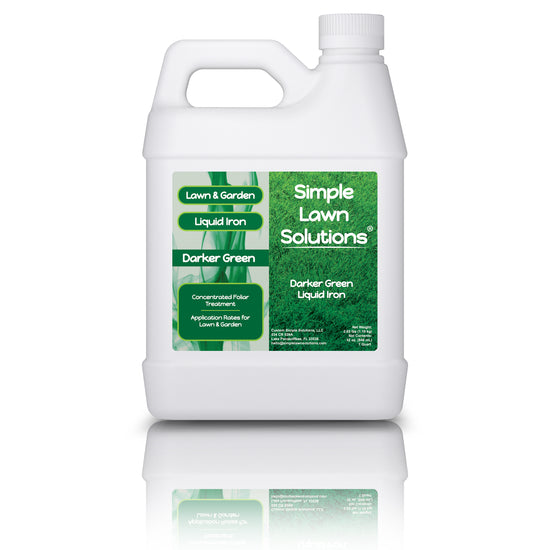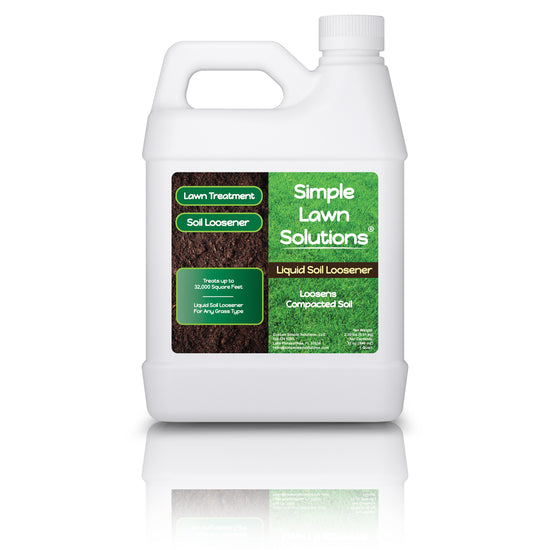Warmer weather brings new opportunities to try different grass care techniques to have a pristine lawn. Everyone loves to look at a perfect lawn, but few people know about the lawn care that goes into maintaining that lawn. Even fewer people are willing to follow through with all the required lawn care steps. That’s why a thick and lush green lawn is such a lovely oddity. In this post, we’ve compiled a list of our top ten grass care tips to help you get the best lawn on the block.
1. Remove Nutrient-Stealing Lawn Scourges
-
Weeds
Even if you’re not familiar with lawn care, most everyone is familiar with dandelions and crabgrass, and you certainly notice when a lawn is void of them. More than distracting from the beauty of a perfect lawn, weeds take nutrients from your turfgrass. To get rid of weeds, the easiest grass care method is to pull them by hand or use a fishtail weeding tool. Be sure to get the root, so the leaves and head don’t grow back. If your weed problem has gotten out of control, and there are more weeds than you can count, try a grass care herbicide that won’t kill grass and treat your entire lawn.
-
Moss
Mosses are a flowerless species of plant that thrives in moist, dark, poor-quality soil. If you leave moss to its own devices, it will spread until it has completely taken over, and your grass can no longer grow. You can get rid of moss by mixing two to four ounces of Dawn Dish Soap with a gallon of water and spraying it over the moss. The moss will die and dry up within twenty-four hours. You can then use a hand rake to scrape it up.
Unfortunately, unless you address the root lawn care problem, moss will return. Correct any drainage issues that keep your soil moist.
2. Fix Drainage Issues Promptly
A waterlogged lawn or soil that stays moist for hours or days opens up several detrimental issues for your grass care. Moss and fungal diseases are among the list of problems, as well as drowning your turfgrass. There are two main reasons a lawn may stay waterlogged.
-
Topography
The topography of your lawn and gardens should direct water away from the house with a gentle slope. Dips on the surface of your lawn can lead to pooling. If the general topography of your lawn or garden is causing pooling, install gutters and drains to direct water away.
-
Soil Permeability
The type of soil, high clay content, thick layers of thatch, and compacted soil are all grass care problems that can lead to poor drainage. Depending on the nature of the problem and the severity, aeration might fix this drainage issue. If the problem persists, you may need to gradually change the nature of your soil by adding organic matter.
3. Aerate Your Soil
As we noted, aerating is the solution to many lawn care problems. More than that, aeration is a critical lawn care practice that helps maintain the healthiest of lawns. Aerating should be done once or twice annually, included in your grass care routine at the beginning and end of the growing season.
Aerating is a lawn care practice designed to introduce air and nutrients deep into the soil and root system of your grass. There are several manual tools you can use to aerate your soil.
Liquid Soil Loosener is an easy, safe, and effective way to help nutrients work their way through the soil. Just spray your yard and allow the powerful formula to open up your soil for maximum nutrient absorption. Follow up with fertilizing your lawn for the best results, and if you need to reseed, a great time to do it is about four weeks after you’ve aerated.
4. Water Fertilizer In
A great way to make sure your grass gets the most out of this common lawn care practice is to water the fertilizer in. This way, your lawn is sure to absorb the most nutrients deep into the roots and soil.
There are many options when it comes to grass care fertilizers. Granular and liquid, and many different macronutrient breakdowns. The major macronutrients for lawn care are:
- Nitrogen - Lawn care fertilizer rich in nitrogen helps to promote new, green leaf growth. If your lawn has a nitrogen deficiency, you will see slow growth and yellowing grass.
- Phosphorous - Lawn care fertilizer rich in phosphorus is essential for seeding and roots.
- Potassium - Lawn care fertilizer rich in potassium helps boost plant hardiness.
5. Edge and Mow
A vigorous lawn requires regular mowing as part of the lawn care routine. You take all these grass care steps to encourage growth, but you keep it cut to the optimal length for the best physical appearance. Most people mow their lawn, but few know there is a proper way to mow. Most people mow their lawn as short as possible to get away with mowing less frequently. But mowing too short aka scalping can hurt your lawn, making it more susceptible to weeds and disease.
Remove no more than ⅓ of the grass length at a time, aiming to keep it longer in the summer months or during times of drought and stress. Mowing higher helps to encourage deeper root growth, and when turf has a deeper root system it is better able to withstand stressors like droughts.
Like with many other lawn care processes, there is an optimal time to mow. Mow your lawn in the early evening, avoiding the added stress of the mid-day sun, and give it ample time to recover before the next day’s afternoon sun. Avoid mowing when the grass is wet, as this can damage your mower, or cause damage to your soil.
Switch up the mowing pattern so that you don’t create ruts in your lawn or train your grass blades to grow in one direction. Be sure to maintain your most valuable grass care tool - your lawnmower. In the middle of the growing season, your mower will probably need an oil change, and the blades sharpened. Dull mower blades tear the blades of your grass and cause the tips to brown and lose moisture quickly.
6. Let Clippings Lie
A seemingly counterintuitive lawn care tip is to let the grass clippings lie, as opposed to bagging them as you mow. If you are mowing frequently enough, grass clippings will be short and break down quickly. Short grass clippings will not contribute to a thick layer of thatch and will help to feed your grass.
7. Correct Bare Patches
Bare patches in a lawn are arguably the biggest scourge on an otherwise beautiful lawn. You can look the other way for a few dandelions, but those bare spots just draw the eye right to them. Luckily, you can correct bare spots anytime, but the best time is in spring, and right after fertilizing. Start by scoring the ground to remove dead grass and loosen the soil. Lay new grass seed and keep moist for about two weeks. In the hot summer months, you might need to water your new grass seed multiple times. Avoid mowing your new grass until it is about three inches tall, and when you do mow, take only the top ⅓ off.
8. Water Your Lawn Correctly
Always water your lawn deeply, about one to two inches of water per week, and less frequently as opposed to light watering every day. Of course, the exception is when you are taking other grass care measures like over-seeding or correcting bare spots. Water early in the morning, so your lawn has the entire day to dry out. Take rainfall into consideration. More rain means less irrigation, and less rain means more grass care and watering.

9. Use Compost
Not to be confused with fertilizer, compost is an important step to go the extra mile for your grass care. Spreading compost over a lawn will help it grow greener and stronger, and fight off annoying weeds. Using decomposing organic matter, or compost increases the helpful microorganisms that make your grass care so much easier.
You can make your own compost or purchase it from local home improvement stores, but the easiest way to add organic material to your soil is again with liquid grass care. Soil Hume: Seaweed Humic Acid Soil Treatment adds organic material directly to your soil to get all the benefits of a homemade compost mixture. However, you won’t have to worry about spreading compost too thick and smothering your already established lawn.
10. Reseed Your lawn
If your lawn is generally pretty thin, you can overseed. Overseeding is the lawn care process of laying new seed on top of an existing lawn. For the best results, overseed in the late summer or early fall. Then follow these lawn care steps:
- Prepare your lawn by aerating if needed, fertilizing it with a formula rich in phosphorus, and then mow your lawn very short. Mowing your grass super short when you overseed is important so that the new seed can get adequate sunlight and land lower in the canopy closer to the soil. After you mow, use a rake to remove thatch and loosen the soil.
- Select a grass seed that is appropriate for your grow zone, and use a lawn spreader to seed your whole lawn evenly. Follow the package directions, and avoid weed and feed products as they can inhibit germination.
- Keep your lawn moist with light watering three to four times a day for the first four days. Then water heavily every other day for the next five days. In the second week, water on your regular watering schedule. Following this watering lawn care process helps to encourage deep new roots to grow.
Everyone knows they need to mow their lawn to keep it looking decent, but that’s the bare minimum. Following the more advanced lawn care tips and schedules is added work, but when you have the lawn that’s the talk of the town, it will be well worth it.











1 comment
Great tips, thank you for sharing. Aerating is so important but isn’t done as often as it should be by homeowners.